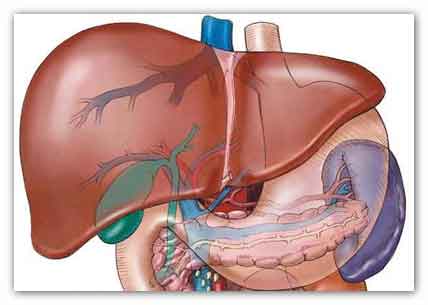|
A new study funded by the National Institute on
Alcohol Abuse and Alcoholism (NIAAA) is among the
first to suggest that intestinal fungi (or
mycobiota) may contribute to the development of
alcoholic liver disease (ALD).

ALD encompasses a broad range of liver diseases,
from simple steatosis (fatty liver) to end-stage
liver disease, or cirrhosis (liver cell death).
Researchers at the University of California, San
Diego and the J. Craig Venter Institute in
Rockville, Maryland, demonstrated that chronic
alcohol administration increases mycobiota
populations and translocation of fungal ▀-glucan
into systemic circulation in mice.
Treating mice with antifungal agents reduced
intestinal fungal overgrowth, decreased ▀-glucan
translocation, and ameliorated ethanol-induced liver
disease.
ALD has previously been associated with bacterial
overgrowth in the intestines, as well as a shift in
the types of bacteria found there.
Until now, little was known about the role of
intestinal fungi in ALD.
In the current study, the researchers found that
fungi flourished in the intestines of mice with
chronic alcohol exposure.
In turn, they noted that fungal overgrowth
exacerbated alcohol-induced liver disease.
To determine whether preventing intestinal
overgrowth protected mice from alcohol-induced liver
disease, the researchers treated them with the
antifungal agent amphotericin B.
They observed that alcohol-dependent patients
displayed reduced intestinal fungal diversity and
Candida overgrowth.
Compared with healthy individuals and patients with
nonľalcohol-related cirrhosis, alcoholic cirrhosis
patients had increased systemic exposure and immune
response to mycobiota.
Compared to untreated mice, mice with
alcohol-related liver disease that received a form
of amphotericin B had lower levels of fat
accumulation, reduced intestinal fungal overgrowth,
decreased ▀-glucan translocation, and ameliorated
ethanol-induced liver disease.
The researchers also conducted small preliminary
studies with humans to examine intestinal fungi of
people with alcohol use disorder and various stages
of liver disease.
They also found that the more prevalent the fungal
overgrowth in individuals with ALD, the higher the
likelihood of mortality.
Taken together, this research suggests that fungi
may play a greater role than previously understood
in controlling the diverse array of microbes that
live on and inside the human body.
If further study confirms that fungi are involved in
the worsening of ALD, it may be possible to slow
disease progression by adjusting the balance of
fungal species living in the intestine of a person
with ALD.
For more information
The Journal of Clinical Investigation
Intestinal Fungi Contribute to Development of
Alcoholic Liver Disease
Link...
MDN |